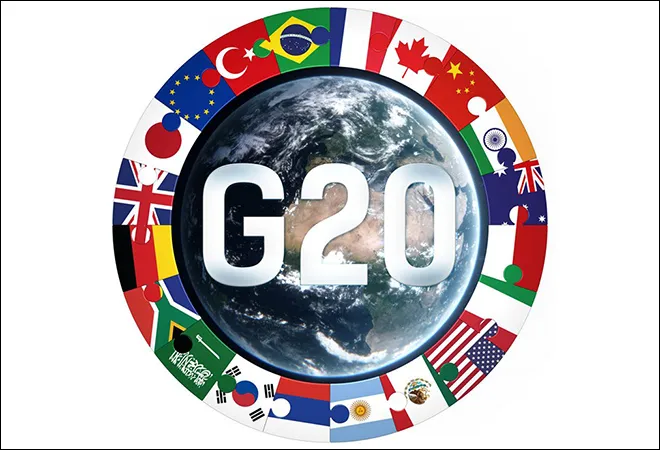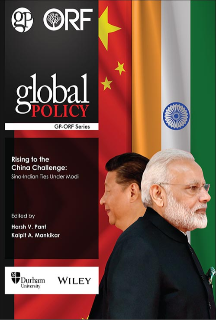
Introduction
The Trade, and Investment Working Group (TIWG), re-christened the Trade, Investment, and Industry Working Group (TIIWG) by the Indonesians in 2022, was
meant to deal with six issues under the Indonesian presidency:
- WTO Reform
- The Role of the Multilateral Trading System to Strengthen the Achievement of SDGs
- Trade, Investment, and Industry Response to the Pandemic and Global Health Architecture
- Digital Trade and Global Value Chains
- Strengthening sustainable and inclusive investment for Global Economic Recovery
- Coherence between Trade, Investment, and Industry.
One of the key issues dealt with by the Working Group on Trade, Investment, and Industry of previous G20 presidencies include Global Value Chains (GVCs). Over the past five years, some issues such as GVC integration have been a consistent concern for the G20. Other issues such as digital trade and the economy have become more mainstream recently.
Over the past five years, some issues such as GVC integration have been a consistent concern for the G20. Other issues such as digital trade and the economy have become more mainstream recently.
The
statement of the G20 trade ministers in 2016 noted the importance of GVCs and Regional Value Chains (RVCs) in driving world trade. That statement committed the G20 members to develop and implement initiatives that would promote infrastructure investment and greater supply chain connectivity. The logic here is that greater GVC integration will mean better integration for SMEs. This recommendation also made its way into the
2016 Leaders Communique which also endorsed the G20 Strategy for Global Trade Growth (SGTG).
The SGTG sets the goals for ‘
mutually reinforcing’ trade and investment policy to create sustainable and inclusive GVCs. While the goals are commendable, the ‘how’ question remains unanswered, both in the strategy and successive ministerial statements.
The Saudi Arabian Presidency in 2020 was necessarily focused on trade recovery to alleviate COVID disruptions.
The 2021 Italian presidency saw the conversation go one step forward with a focus on securing health supply chains as a response to the pandemic while reiterating the need to enable MSMEs to upgrade the use of technology to enable them to participate in GVCs. The non-binding MSMEs Policy Toolkit which was annexed to the Saudi Arabian Trade
Communique needs a relook to upgrade some of these policies to binding action, especially when it comes to access to information and communication networks between MSMEs.
Digital Economy Working Group vs Digital Supply Chains
The question of digital infrastructure and the digital economy comes up in both the Trade and Investment Working Group and the Digital Economy Working Group. There is a clear overlap between these groups given the omnipresent nature of digital components in all sectors of the economy.
The Digital Economy Working Group emanated from the G20 Digital Economy Task Force set up in 2017. The limited mandate of that task force and eventually the working group was
ideating on the application of digital technology to develop an inclusive, resilient, and sustainable digital economy.
The mandate of discussions within the TIIWG has been to discuss the digital economy in terms of its interaction with traditional goods and services trade. In recent times, it was mentioned in
the Argentinian Trade and Investment Ministerial Statement in 2018 in terms of the adoption of digital tech to enable the New Industrial Revolution (NIR). The Japanese presidency in 2019 made the digital economy a central pivot of the Trade Track discussions. The
G20 Ministerial Statement on Trade and Digital Economy ideated the importance of a human-centred future society or
Society 5.0. They also included for the first time, the idea of ‘data free flow with trust’ and digital infrastructure which India was uncomfortable with. The Riyadh Communique continued along more traditional lines of the importance of fostering the digital economy and digital infrastructure to promote trade in both goods and services. There was a significant focus on trade in services. The Italian presidency reduced references to digital aspects of trade significantly with a
Ministerial Declaration coming out of the Digital Economy Working Group (DEWG) instead. This declaration reintroduced the idea of ‘data free flow with trust’. Indonesia has released the G20 Chair’s summary for the TIIWG which goes back to the original topic of digital trade and GVCs.
2023: What could be?
While on the GVC issues, India has been in sync with other G20 countries, it has had several reservations on issues of ‘data free flow with trust’. The country has cited
the digital divide and and the imperative to design domestic laws first as key reasons for this. India gains significantly from services trade which is enabled by digital flows.
As of 2017, 66 percent of India’s services trade was in Mode 1, which is enabled by data flows. It is no surprise then, that it wants to make its own rules before committing to any international rules.
A common point in all these discussions has been the language used of ‘best endeavour’ ideas. While this may have been useful so far, India may consider getting a full commitment on digital infrastructure investments from the West to the Global South to create a level playing field.
While on the GVC issues, India has been in sync with other G20 countries, it has had several reservations on issues of ‘data free flow with trust’.
Specifically, for the GVC question, given the recessionary tendencies emerging in the world’s largest economies and continued stress from COVID-related supply shocks, supply-chain resilience has become even more urgent. While GVCs and supply chains complement each other, they need equal and individual attention. Recessions directly impact supply chains due to their upward effect on the price of manufacturing. It is necessary to ensure supply chains remain at least marginally independent from the flux in the macroeconomic and fiscal policy space to minimise the impact of economic downturns on the production of essential commodities at the very least. In that case, India’s G20 will, thus, need to make the conversation around GVCs more nuanced and make a clear distinction between the value chain and supply chain discussion.
On the digital front, the urgent question is going to be finding some common ground on the question of data flows. Niti Aayog’s
Digital Empowerment and Protection Architecture (DEPA) can play a role in finding this consensus as it creates an institutional framework which is scalable. A question that needs attention is the potential for duplication of work between the TIIWG and the DEWG: What are the ways to ensure that the DEWG is discussing deliverables in line with the goals of the TIIWG? Should a joint task force of the two working groups be considered? It is important that there is at least some cross-pollination of thoughts and ideas so that more efficient conclusions can be reached.
Authors Note: Some of these ideas were discussed at the CyFy Studio session titled:
India's G20 Priorities: The Tech Question
The views expressed above belong to the author(s). ORF research and analyses now available on Telegram! Click here to access our curated content — blogs, longforms and interviews.




 PREV
PREV


